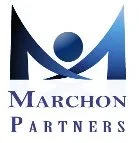
The Importance of Employee Recognition
Is the traditional corporation shifting in a more human-oriented direction? You may be familiar with the old-school, bottom-line thinking: driving toward profits, cost savings, and efficiency rather than employee satisfaction and a positive working culture. But what if an employee-first culture does lead to bottom line benefits… wouldn’t it make sense to make the shift? Let’s take a look at how employee recognition – just one aspect of a positive work culture – can make your business better and perhaps even more successful.
What is Employee Recognition?
Employee recognition is both the acknowledgement of what employees do as well as who they are.
According to Harvard Business Review, recognition for achievement – bonuses for signed contracts, launched products, etc. – is an excellent motivator to meet business objectives. This type of recognition is important to help team members feel a part of the common goal or win.
However, recognition that is based solely on the wins is a very one-sided view of workplace success. So much of the day-to-day effort that is required to keep the business running goes unnoticed with that approach.
Therefore, employee recognition within your culture should not only include the traditional notion of rewards for performance, but should also include appreciation. According to the HBR article:
“This distinction matters because recognition and appreciation are given for different reasons. Even when people succeed, inevitably there will be failures and challenges along the way; depending on the project, there may not even be tangible results to point to. If you focus solely on praising positive outcomes, on recognition, you miss out on lots of opportunities to connect with and support your team members — to appreciate them.”
The good news here? Appreciation can be absolutely free (although it doesn’t have to be). Let’s look at the benefits of including employee recognition and appreciation into your workplace culture.
Recognizing Employees Pays Off
Maybe you don’t think you have time for recognizing, and rewarding, employees. However, if you understand the benefits of doing so, you may make the time.
No matter how many management classes you take, you can’t get around the fundamental truth: companies are made up of people, and we bring our humanness to work with us every day. Just ask any seasoned human resources professional, right?
Employees, no matter their level or compensation, seek validation at work largely because they are human, plain and simple. According to an Achievers’ study, 93% of employees desired some type of workplace recognition at least once a quarter. They also reported that, “…75% of employees who received at least monthly recognition (even if informal) reported being satisfied with their jobs.”
Employee satisfaction translates to several benefits to the organization.
Most notably, satisfied employees are less likely to leave their jobs. There are a million studies that have proven this to be fact.
Lower employee turnover is very important in companies in several ways. First of all, it provides cost savings in recruitment and new-hire training. Forbes estimates, “a new hire might cost $4,129 and as many as 42 days in lost or compromised productivity.”
And in a difficult job market, there is no guarantee that you’d even find a comparable employee to the one who left you. If you do, you may have to pay a premium to get them.
In addition, a low turnover environment leads to a more stable, and committed, workforce and a stronger workplace culture. Happiness begets happiness… supported people support people.
How to Recognize and Appreciate Your Employees
Employee recognition programs can come in all shapes and sizes. Again, bonus programs for achievement have their place and are an important part of compensation. In addition to those, employee appreciation can be both formal and informal.
Company-wide employee appreciation sets the tone for managers that you have a culture of appreciation… that mutual respect is expected and gratitude is a core value. Monthly award nominations are an easy start. Companies that use Slack or other collaboration tools can even set up hashtags or tags for employees to recognize each other.
Managers should also incorporate even the simplest recognition into their routine employee communication.
- Publicly acknowledge “behind the scenes” individuals along with those in the spotlight
- Thank individuals for efforts to create high-quality work, go the extra mile for a customer, respond after hours, etc.
- Make the effort to use words of appreciation… please and thank you go a long way
Why Now?
The days of cut-throat business environments are numbered. Our American work culture is changing. It started with the dotcoms of the 1990s and technology start ups of the early 21st century. But our work culture has taken a most dramatic turn since 2020 as both company and worker priorities have shifted.
Human resources professionals have always preached, “Our greatest asset is our people.” It’s time to take another look at how you engage with your people. We think a focus on recognition and appreciation will reap great rewards – financially and culturally – creating positive returns in 2022 and beyond.
